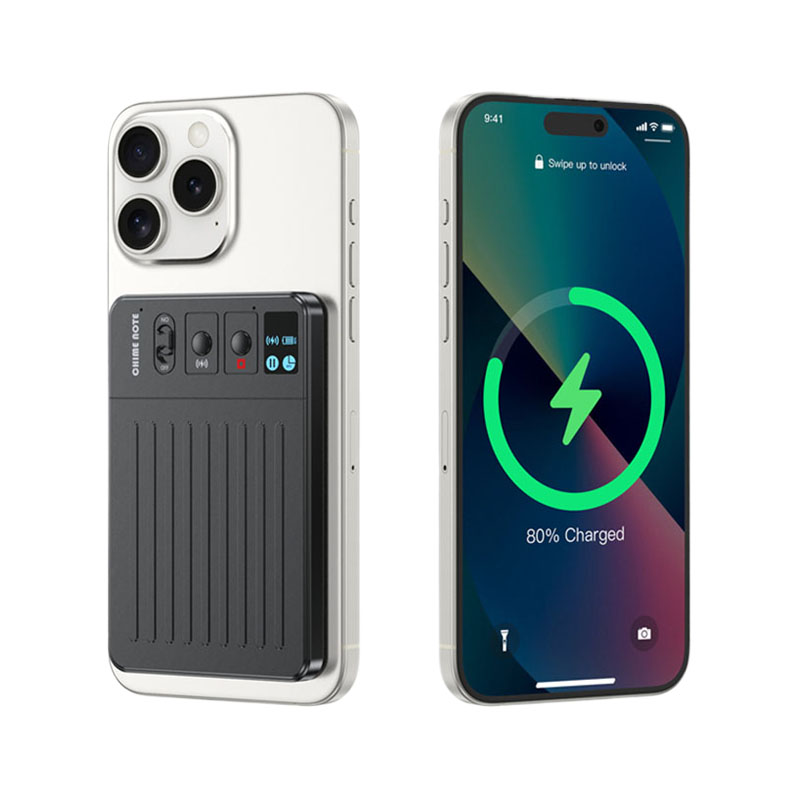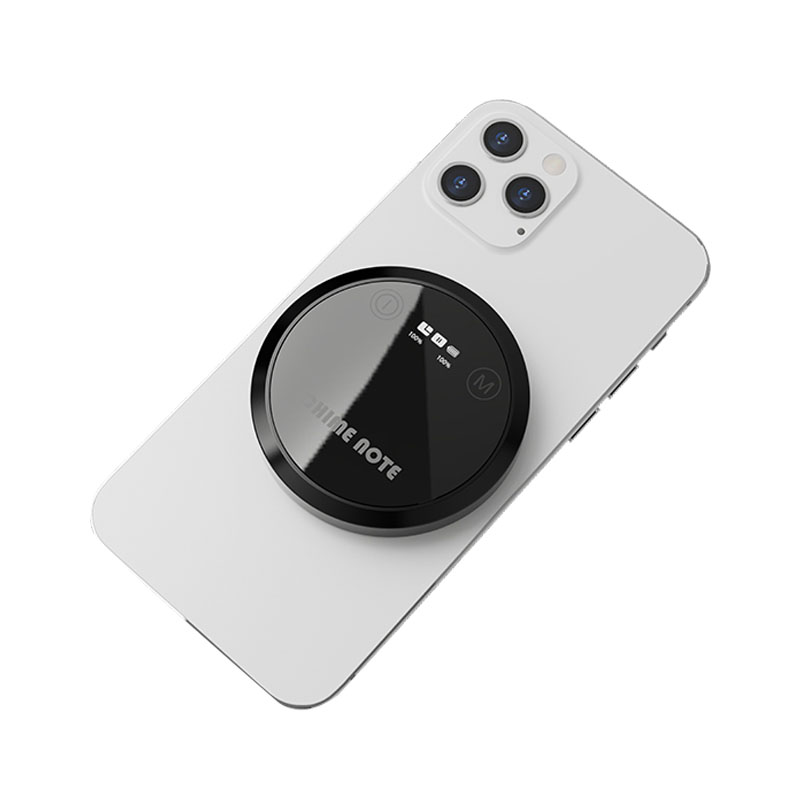How does AI Voice Recorder achieve high-precision speech recognition and automatic multi-speaker differentiation?
Release Time : 2025-08-14
In the age of information explosion, voice, as a crucial medium for knowledge transfer, exchange of ideas, and emotional expression, has become more crucial than ever before in recording and mining its value. AI Voice Recorder has transcended the "record-and-go" limitations of traditional recording devices, evolving into a "sound intelligence hub" that integrates intelligent perception, deep understanding, semantic analysis, and knowledge reconstruction. It's not just a faithful recorder for meetings, classrooms, and interviews, but also a digital collaborator that listens, thinks, and understands you, quietly reshaping how people interact with information.
The depth of AI Voice Recorder lies first in its ability to "understand" voice, not just "capture" it. Modern devices, equipped with multi-microphone arrays and advanced noise reduction algorithms, can accurately capture target sound sources, filter out environmental interference, and ensure clear recordings, even in noisy conference rooms, bustling streets, or echoing lecture halls. But this is just the beginning. The real revolution lies in its built-in AI engine—it performs real-time speech recognition while recording, converting continuous sound waves into structured text. Furthermore, leveraging natural language processing (NLP) technology, it can distinguish between different speakers, automatically segment speech, identify keywords and core topics, and even extract meeting minutes, to-do items, and key decision points. This leap from "voice" to "text" to "knowledge" significantly improves the efficiency and usability of information processing.
The AI Voice Recorder is no longer a general-purpose recording tool; it automatically optimizes its mode based on different usage scenarios. In academic lectures, it can identify professional terminology and build a dedicated vocabulary to improve transcription accuracy. In business negotiations, it can mark key commitments and timelines to assist in risk management. During creative field trips, it can capture moments of inspiration and support the flexible switching between voice notes and text. Some high-end models even feature offline voice recognition to protect user privacy and prevent the leakage of sensitive information. Cloud sync and multi-device collaboration allow users to access, edit, and share recordings anytime, anywhere, breaking the constraints of time and space.
At a deeper level, innovation lies in the exploration of "active intelligence." Future AI voice recorders will not only passively record and transcribe, but will also possess predictive and suggestive capabilities. For example, they can analyze users' speech patterns based on historical recordings to provide speech optimization suggestions; during interviews, they can provide real-time reminders of missed key questions; or automatically link relevant documents, emails, and calendar events based on meeting content. They are evolving from a "tool" to an "intelligent agent," becoming an extension of personal knowledge management and cognitive enhancement. Through deep learning, they can understand context, emotion, and even subtext, providing users with insights beyond the text.
Ultimately, the value of AI voice recorders lies in their redefinition of the meaning of "listening." They free up human attention, allowing people to focus on thinking and interacting without being distracted by recording. They break down language barriers, with real-time translation capabilities enabling cross-language communication. They safeguard the integrity of memories, ensuring that important ideas and decision-making processes are not forgotten. In fields such as education, law, media, and scientific research, they are becoming a critical tool for improving productivity, ensuring accuracy, and facilitating knowledge accumulation. This device, which integrates acoustics, artificial intelligence and human-computer interaction, is not only a product of technology, but also an intelligent partner for humans to expand their cognitive boundaries and control the torrent of information.
The depth of AI Voice Recorder lies first in its ability to "understand" voice, not just "capture" it. Modern devices, equipped with multi-microphone arrays and advanced noise reduction algorithms, can accurately capture target sound sources, filter out environmental interference, and ensure clear recordings, even in noisy conference rooms, bustling streets, or echoing lecture halls. But this is just the beginning. The real revolution lies in its built-in AI engine—it performs real-time speech recognition while recording, converting continuous sound waves into structured text. Furthermore, leveraging natural language processing (NLP) technology, it can distinguish between different speakers, automatically segment speech, identify keywords and core topics, and even extract meeting minutes, to-do items, and key decision points. This leap from "voice" to "text" to "knowledge" significantly improves the efficiency and usability of information processing.
The AI Voice Recorder is no longer a general-purpose recording tool; it automatically optimizes its mode based on different usage scenarios. In academic lectures, it can identify professional terminology and build a dedicated vocabulary to improve transcription accuracy. In business negotiations, it can mark key commitments and timelines to assist in risk management. During creative field trips, it can capture moments of inspiration and support the flexible switching between voice notes and text. Some high-end models even feature offline voice recognition to protect user privacy and prevent the leakage of sensitive information. Cloud sync and multi-device collaboration allow users to access, edit, and share recordings anytime, anywhere, breaking the constraints of time and space.
At a deeper level, innovation lies in the exploration of "active intelligence." Future AI voice recorders will not only passively record and transcribe, but will also possess predictive and suggestive capabilities. For example, they can analyze users' speech patterns based on historical recordings to provide speech optimization suggestions; during interviews, they can provide real-time reminders of missed key questions; or automatically link relevant documents, emails, and calendar events based on meeting content. They are evolving from a "tool" to an "intelligent agent," becoming an extension of personal knowledge management and cognitive enhancement. Through deep learning, they can understand context, emotion, and even subtext, providing users with insights beyond the text.
Ultimately, the value of AI voice recorders lies in their redefinition of the meaning of "listening." They free up human attention, allowing people to focus on thinking and interacting without being distracted by recording. They break down language barriers, with real-time translation capabilities enabling cross-language communication. They safeguard the integrity of memories, ensuring that important ideas and decision-making processes are not forgotten. In fields such as education, law, media, and scientific research, they are becoming a critical tool for improving productivity, ensuring accuracy, and facilitating knowledge accumulation. This device, which integrates acoustics, artificial intelligence and human-computer interaction, is not only a product of technology, but also an intelligent partner for humans to expand their cognitive boundaries and control the torrent of information.







